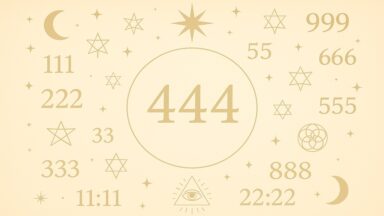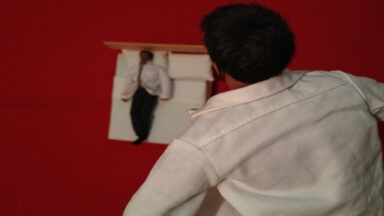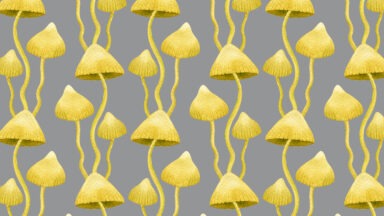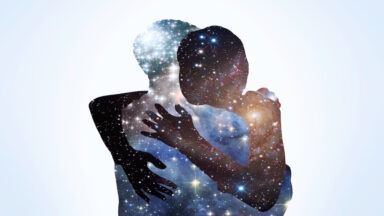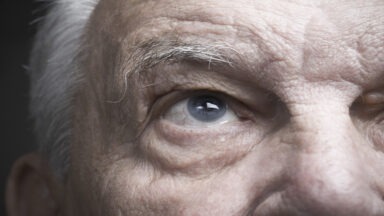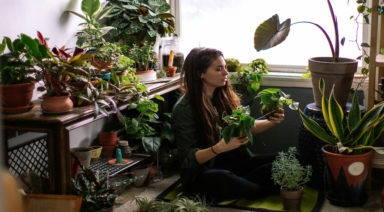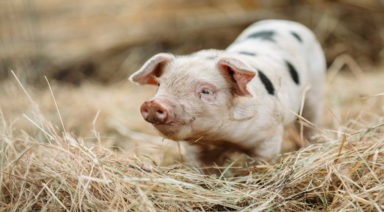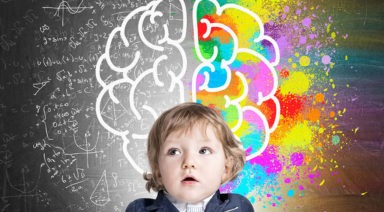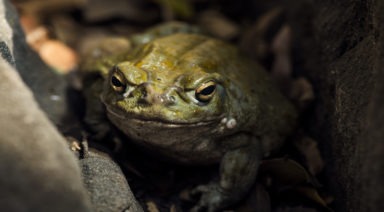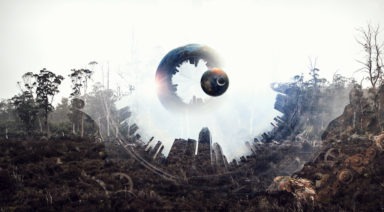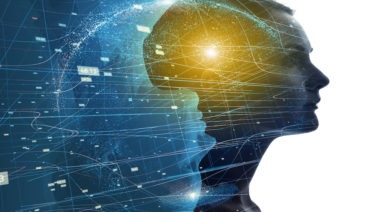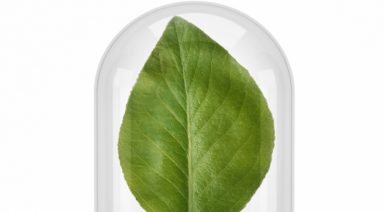What is Remote Viewing? Declassifying a Psychic Phenomenon
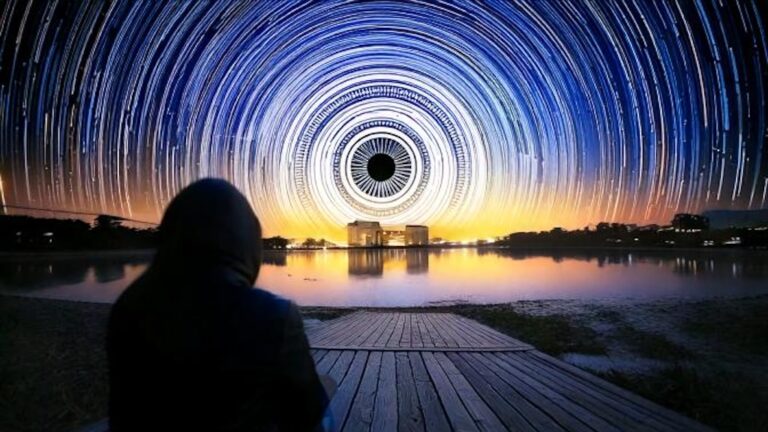
Remote viewing is the psychic ability to acquire accurate information about a distant or non-local place, person, or event without using your physical senses or any other obvious means. It’s associated with the idea of clairvoyance, seemingly being able to spontaneously know something without actually knowing how you got the information. It is also sometimes called “anomalous cognition” or “second sight.”
Many of us experience this from time to time as an intuitive flash of insight that turns out to be correct. Many well-known entrepreneurs and business people, like George Soros, Conrad Hilton, Thomas Alva Edison, and Akio Morita, the co-founder of Sony, have attributed their business success to this ability. And we’ve all seen natural psychics perform seemingly amazing feats of mental skill on TV.
The difference between natural psychic receptivity and remote viewing is that the latter is a trained skill, a controlled process, that the average person can learn to do to some degree.
This ability seems to be distributed in the human population in varying degrees, just like a musical skill—some people are really good at playing an instrument, but almost everyone can hum a tune or whistle.
History of the Remote Viewing Program
Remote viewing in modern times originates from the U.S. government’s interest in psychic espionage during the Cold War with the Soviet Union. Back during World War II, the Soviets had heard rumors that the U.S. military was using psychic spies and communications at sea. While it’s not clear now whether this was true, the Soviets believed it and started their own psychic training within their military and intelligence agencies many decades ago. The U.S. government learned of this program and, in the early 1970s, decided to create a remote viewing CIA training program.
Stanford Research Institute Remote Viewing Experiments
Money and resources were given by the Central Intelligence Agency to Stanford Research Institute (SRI), located on the campus of Stanford University at the time, to test the possibility of remote viewing. The goal was to disprove that psychic functioning was real. No one wanted it to exist. It was the last thing the military establishment wanted to worry about, especially if it was a new Soviet threat.
Physicists Russell Targ and Harold Puthoff, working at SRI, were tasked with determining whether extrasensory perception (ESP) and related phenomena were real or not (known as parapsychology). During their parapsychological research, Targ and Putoff set about to locate some natural psychics and test them. Their first subject was artist, psychic, and scientist Ingo Swann of New York City, who had demonstrated an ability to accurately “remote view” weather in various American cities. He also published some articles about ESP and psychokinesis (the ability to mentally affect distant objects) when he worked with researcher Gertrude Schmeidler of City College and the American Society for Psychical Research.
Working with Schmeidler, Swann had shown that he could affect the temperature of thermistors sealed in insulated thermos canisters twenty-five feet away from him. At a friend’s request, Swann sent his published findings to Putoff, who asked Swann to come to SRI and demonstrate his abilities. The first thing they had Swann do was to see if he could affect a super sensitive, electromagnetically shielded quark detector buried five feet underground in a cement floor. Every time Putoff asked Swann to think about the detector (used to detect subatomic particles), the readings from the device would noticeably deviate from the baseline readings. Putoff was convinced that Swann had special abilities, and so the program to test and develop remote viewing began.
Expanded Scope
At first, they had Swann view objects in a box; this was a practice he was good at but quickly became bored with. Swann said to them, “I can view anything in the universe; this is a trivialization of my abilities.” A few days later, he came up with a new way to do remote viewing: viewing map coordinates. Targ and Putoff went out and bought the biggest atlas they could find at the local bookstore. Swann’s coordinate map viewing turned out to be a big success. A critic at the Central Intelligence Agency suggested that maybe he had memorized the entire global map.
Swann went on to use randomly chosen numerical coordinates to view randomly selected events, people, and structures around the planet. He performed equally well using this coordinate-based viewing system.
Validation of Remote Viewers
Swann coined the term “remote viewing” to describe the process, though you can question whether the information is remote to the viewer or whether the process is entirely visual. Some people are more sensitive to auditory, kinesthetic, or other sensory types, and few viewers actually “see” the target very clearly. Nonetheless, the name stuck and was sufficient to convince the intelligence agencies to fund the project.
Other viewers were also tasked to help Targ and Putoff understand remote viewing. Pat Price, a former police commissioner from Burbank, California, also proved to be an excellent viewer. Price used his own system to view where he imagined that he was at the distant target site. His results were so good that the Central Intelligence Agency hired him to work for them directly. Back East, another natural viewer, Joe McMoneagle, also known as “Remote Viewer No. 1,” worked directly with the U.S. Army and the Defense Intelligence Agency. He was also tested and found to have amazing abilities to describe and sketch distant locations. Upon retirement, McMoneagle was awarded a Legion of Merit award, in part, for his five years of remote viewing missions for the military and various government agencies.
Beyond government use, some remote viewers have claimed applications in areas such as crime-solving, missing persons searches, and even financial market predictions. However, these claims remain anecdotal and lack independent verification.
Coordinate Remote Viewing
However, Swann was able to describe, with great precision, what he was doing with his mind and attention as he was viewing, an ability other viewers did not have. This allowed him to come up with a 6-stage system that could be taught to anyone, including you or me. It became known as CRV: Coordinate (or Controlled) Remote Viewing.
Swann’s CRV system is based on separating out signal from noise in your mind as you are viewing. All the information is recorded during a session, but the viewer puts the noise in a different place on the paper than the signal. At the end of the session, you can separate them from one another. The method became the basis of the remote viewing protocols that the U.S. Army taught to several groups of viewers. The program continued until 1995, at which point it was declassified by the government. Over two decades, approximately $20 million of funding went to what eventually became known as the Stargate Project.
Princeton’s Random Number Generator Research
During this time, the Princeton Engineering Anomalies Research Lab (PEAR) at Princeton University, run by Bob Jahn and Brenda Dunn, also conducted twenty years of research into remote viewing and so-called “micro-psychokinesis” with experiments on the effect of human intention on Random Number Generators (RNGs). They found that looking at the cumulative results of hundreds of thousands of trials, their subjects could influence about 2 or 3 events per 10,000 random coin flips by seemingly moving the device away from true randomness in an inexplicable way. The odds of these results being by chance were an astonishing 375 trillion to one.
Scientific Analysis of the Program
When the Stargate program was declassified, one of the two people asked to evaluate the program was statistician Jessica Utts, the head of the American Statistical Association at the time of this writing. She concluded, “Using the standards applied to any other area of science, it is concluded that psychic functioning has been well established. Arguments that these results could be due to methodological flaws in the experiments are soundly refuted. Effects of similar magnitude to those found in government-sponsored research at SRI and SAIC (another government-sponsored think tank) have been replicated at several laboratories across the world. Such consistency cannot be readily explained by claims of flaws or fraud.”
Researcher Dean Radin, doing very complex meta-analyses using the results of many studies about psychic perception over many decades, came to the same conclusion. Looking at the entire population, not just trained viewers, remote viewing has a weak effect, about four to eight percent higher than expected if we were only using our physical senses to gather information; yet, it’s consistently there in everyone.
Coordinate Remote Viewing
However, Swann was able to describe, with great precision, what he was doing with his mind and attention as he was viewing, an ability other viewers did not have. This allowed him to come up with a 6-stage system that could be taught to anyone, including you or me. It became known as CRV: Coordinate (or Controlled) Remote Viewing.
Swann’s CRV system is based on separating out signal from noise in your mind as you are viewing. All the information is recorded during a session, but the viewer puts the noise in a different place on the paper than the signal. At the end of the session, you can separate them from one another. The method became the basis of the remote viewing protocols that the U.S. army taught to several groups of viewers. The program lasted until 1995 when it was declassified; about $20 million was spent over the two decades.
How Does Remote Viewing Work?
When someone asks you to describe something, you normally proceed to name what you’re perceiving using nouns and symbols. Remote viewing is just the opposite. You begin by describing your perceptions without trying to identify anything about what they mean or what the larger picture is. Start with basic gestalt: fundamental, general components of the target site, such as whether it’s manmade, living, or natural. You then proceed to basic colors, smells, temperatures, shapes, and sizes.
Unlike clear mental pictures, the information usually surfaces as vague impressions, symbols, or sensory cues. Remote viewers often describe textures, colors, or feelings rather than full images, which makes the verification and feedback loop essential to interpret the data accurately.
Only after you’ve been describing the target for a while can you proceed to more specific ideas and possibly names, nouns, and more analytical types of information.
In this way, Swann would say that you are opening the aperture of your perception slowly and resisting the temptation to draw conclusions about what you are viewing.
Follow the Ambiguity Methodology
Our minds are always attempting to conclude what we’ve perceived at any given moment, but because you have no conscious, physical information to work from in remote viewing, you’re almost always likely to be wrong if you do so. This brings us to one of the great paradoxes of remote viewing: the fainter the perception, the more likely it is to be accurate and the less likely you are to feel confident in that perception.
In other words, the more confident you are about your remote perceptions during the session, the less likely those perceptions are to be correct! And the less confident you feel, the more likely it is that your perceptions are right on. How’s that for a paradox?
Good remote viewers learn to trust the feelings of uncertainty and ambiguity they get while doing a session.
How to Learn Remote Viewing
If you’d like to explore remote viewing, there are many resources available. Books by participants in the original program—such as Joe McMoneagle, Lyn Buchanan, Paul Smith, Ingo Swann, Dale Graff, and researchers like Russell Targ or Ed May—offer firsthand accounts and training methods. Others, including Dean Radin, Courtney Brown, and Angela Thompson Smith, continued studying the subject after the government program was declassified. You can also look into the International Remote Viewers Association (IRVA), which holds an annual conference for those interested in the practice.
No one entirely understands how remote viewing works, so you’re likely to learn the most by keeping an open but balanced mindset as you read about it and perhaps try it for yourself. Meditation or other focus practices can be useful starting points, especially if you’ve never done any subtle awareness training before.
While many groups promote remote viewing as a learnable skill, it’s important to approach the practice with both curiosity and skepticism. Scientific consensus maintains that no controlled studies have confirmed its reliability, so any personal experiences should be treated as subjective rather than objective proof.
What Is Spiritual Mediumship and How Does It Develop?

Mediumship is an ability that allows some people to act as a channel between the physical plane and the spiritual world. This ability manifests itself in various forms and has been recognized in multiple traditions throughout history. In this article we explore what it means to be a medium, how this faculty is developed and what its purpose is within the spiritual path.
Table of Contents
- What Does It Mean to Be a Spiritual Medium?
- What Is a Mediumship Session Like?
- What Kind of Messages Are Received in a Mediumship Session?
- Who Can Be a Spiritual Medium?
- How Do I Know if I Have the Gift of Mediumship?
- How Does Mediumship Develop?
- History and Origins of Mediumship
- Literature and Resources on Mediumship
What Does It Mean to Be a Spiritual Medium?
Mediumship means having the ability to act as a channel between the physical world and spiritual dimensions, facilitating the exchange between human beings and non-corporeal entities such as spirits of the deceased and spirit guides. This ability manifests in different forms, including clairvoyance (seeing spirit entities), clairaudience (hearing spirit messages) and psychometry (reading information from physical objects).
Mediums are instrumental in the process of providing comfort and understanding to those seeking closure with past events or beings. Through their unique connection, they facilitate communication that allows people to receive important messages and signals, offering a spiritual perspective that can be important for personal growth and emotional healing.
In the series Channeling: A Bridge to the Beyond, available on Gaia, the connections between mediums, channelers, and other forms of contact with the spiritual world are explored. Throughout the episodes, the series delves into how these practices allow access to higher planes of consciousness and receive messages from other dimensions.
What Is a Mediumship Session Like?
A mediumship session usually begins with the medium establishing a calm and protected environment where both the querent and the medium can feel safe and relaxed. It is common for the medium to ask the spirit world for permission to communicate and to request the presence of spirit guides to facilitate a clear and protected connection. The intention is to create a sacred space that allows for fluid and respectful communication.
During the session, the medium enters a state of concentration or light trance, which allows him/her to tune into the frequencies of the spiritual plane. Messages may come in the form of images, sounds, sensations or even intense emotions. The medium interprets these signs and transmits them to the person consulting. Not all communications are verbal; some may be impressions or feelings that the medium describes to his client.
At the end of the session, it is customary for the medium to offer a moment for the person consulting to ask questions or seek clarification on the information received. The session is then closed with a prayer of thanksgiving to the spirit entities for their guidance and protection. It is important that both the medium and the querent take a moment to anchor and clear their energy, ensuring that the spiritual connection is properly closed.
What Kind of Messages Are Received in a Mediumship Session?
In a mediumship session, the messages received can vary widely, depending on the needs of the person consulting and the entities communicating. These messages are intended to provide guidance, comfort, or resolution of unfinished business. Often, they are personal and meaningful, designed to aid in healing, understanding, or personal growth.
- Advice and guidance: Spirits often offer advice in dealing with personal challenges or important decisions. They may provide insights or suggestions based on their broader view of the person’s life plan.
- Messages of comfort: It is common to receive messages from deceased loved ones seeking to reassure family members that they are at peace and still present in some way. These messages can help ease the pain and encourage the grieving process.
- Warnings and cautions: Sometimes, messages contain warnings about future health problems, poor decisions or negative relationships. These warnings are intended to protect the person and guide them to a safer path.
- Validations and confirmations: Spirits can provide information that validates past emotions, situations or decisions. These types of messages reinforce the feeling of being connected to the universe and being on the right path.
- Resolution of pending issues: Messages may also include apologies or explanations about past conflicting situations or misunderstandings. This can be essential for emotional closure and healing for both the receiver and the spirit.
Who Can Be a Spiritual Medium?
Mediumship is not limited to a specific type of person; people of any age, culture or background may find that they possess this gift. While some people may show natural abilities from an early age, others may develop them later in life. What is essential is a willingness to connect with the spiritual plane and the ability to open the mind and heart to experiences beyond the tangible.
The predisposition to mediumship may be innate or may be stimulated by significant life events, such as a near-death experience or a deep personal crisis. These experiences often act as catalysts, awakening a sensitivity to subtle energy and spiritual dimensions. However, having a natural inclination is not a requirement; with proper training and practice, almost anyone can develop the ability to mediate between worlds.
How Do I Know if I Have the Gift of Mediumship?
Recognizing the gift of mediumship often begins with perceiving signs or receiving messages that others do not detect. These experiences may manifest as strong intuitions, vivid dreams, or even voices with no apparent source. If these perceptions become more frequent or intense, it could be a sign of underlying mediumistic abilities.
In addition, a tendency to feel the emotions or thoughts of others intensely or a special, unexplained connection to certain places may also indicate mediumistic potential. The key is in conscious observation of how these experiences affect and integrate into daily life. Those who find that these events bring clarity or comfort, rather than fear or confusion, may be discovering their path to mediumistic practice.
How Does Mediumship Develop?
Developing mediumistic skills often begins with education and practice in spiritual and energetic development techniques. Meditation is essential, as it helps to calm the mind and strengthen the connection to the spiritual plane. Attending workshops or classes with experienced mediums can also provide the tools necessary to understand and master these skills.
Constant practice is crucial for any aspiring medium. This includes not only meditation and energy exercises, but also participating in spiritual circles where one can practice receiving and delivering messages under the supervision of professionals. These environments allow a safe space to explore and hone mediumistic skills, learning to discern between different types of energies and messages.
History and Origins of Mediumship
Mediumship has been an integral part of many cultures throughout history, with evidence dating back to ancient civilizations such as Egypt, Greece and Rome. In these cultures, mediums were seen as bridges between gods and humans, providing essential guidance and revelations. These figures were often revered and feared, depending on local beliefs and power structures.
During the Middle Ages, the perception of mediumship changed considerably due to the influence of the Church. Mediums were often labeled as witches or heretics and persecuted accordingly. However, in secret societies and among certain esoteric groups, mediumship continued to be practiced and passed from generation to generation as a profound spiritual art.
Modern interest in mediumship resurfaced in the 19th century with the Spiritualist movement, particularly through figures such as the Fox brothers in the United States and later, Allan Kardec in Europe. This period marked the beginning of a more formalized study and practice of mediumship, leading to widespread recognition and the formation of Spiritualist societies throughout the world.
Literature and Resources on Mediumship
For those interested in deepening their understanding of mediumship, there is a variety of resources and literature available, offering everything from practical guides to historical and philosophical analyses.
- The Spirits’ Book by Allan Kardec: First published in 1857, this book is considered the cornerstone of modern Spiritism. Kardec presents a series of questions and answers that he claimed were communicated by spirits, offering a systematic view on morality, philosophy, and the nature of the soul.
- So You Want to Be a Medium: A Down-to-Earth Guide by Rose Vanden Eynden: This modern guide provides practical tools and advice for those wishing to develop mediumistic abilities. The book also addresses the ethics and responsibilities that come with this practice.
- The Wanderings of a Spiritualist by Arthur Conan Doyle: The famed author of Sherlock Holmes, also a fervent spiritualist, explores the history of mediumship from antiquity to the 20th century. Doyle offers both personal accounts and documented cases that examine the veracity and challenges of mediumship.
- Signs: The Secret Language of the Universe by Laura Lynne Jackson: This book provides a personal and profound exploration of how the author balances her normal life with her extraordinary abilities. Jackson shares her experiences and the lessons learned, aiming to guide others who may be awakening to their own abilities.









